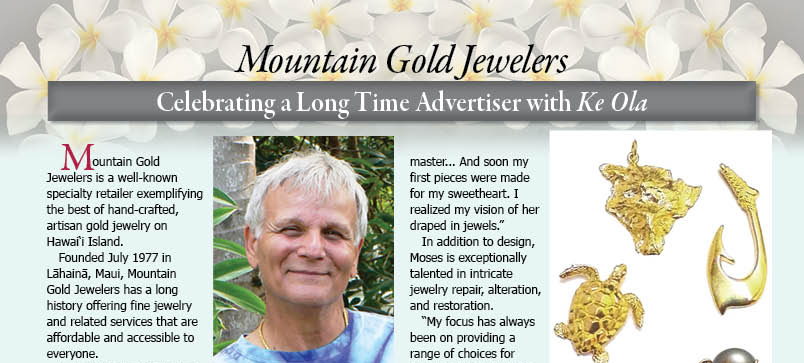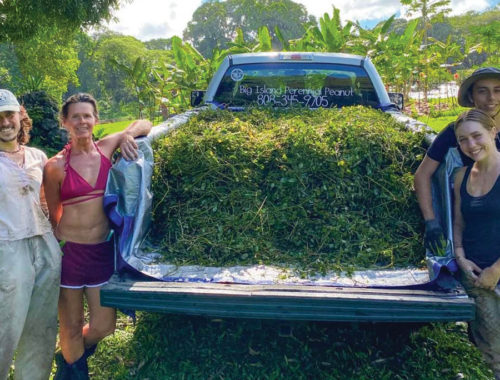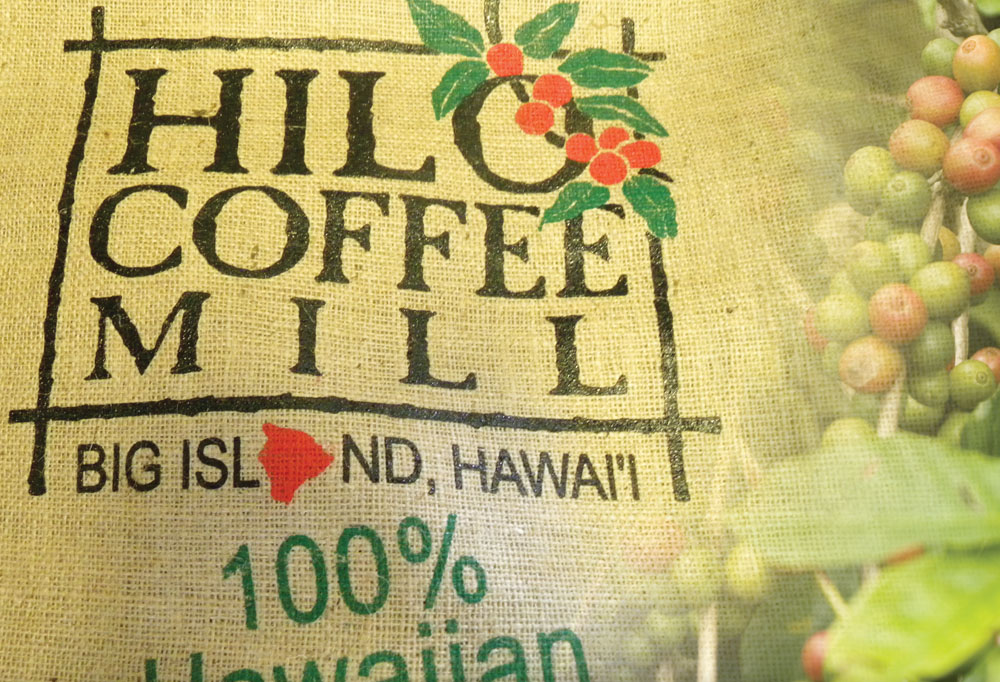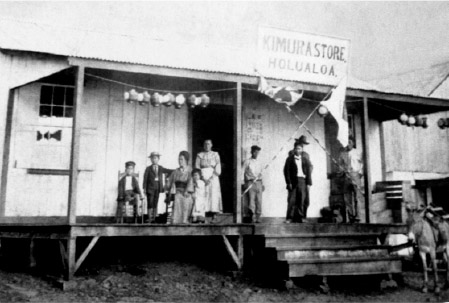
Every Store has a Story: The Japanese Pioneers of the Kimura Lauhala Shop

By Gayle Kaleilehua Greco
“Come, come, here is the room I was born in; there used to be a shoji door here,” says Alfreida (Kimura) Fujita, as we walk down the hall of the Kimura Lauhala Shop in Hōlualoa. Alfreida’s eyes dance brightly as she reminisces of days gone by with her grandparents, Yoshimatsu and Tomo Kimura.
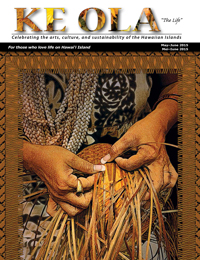
“Here was the coffee farm and cotton farm,” Alfreida says, looking out of a wood-framed window toward the ocean. “We used to be able to see all the way to the water from here. There were water tanks and coffee shacks that my grandfather built for the workers and homeless.”
In that moment, there is no past or present; there is only the knowing that the Kimura family has spent generations devoted to this land and the community.
When Yoshimatsu and Tomo Kimura immigrated to Hawai‘i in 1894, they had a vision of providing for their family in a new frontier. Approximately 4,000 miles from their hometown of Wasa, Morino-mura, Oshima Gun, Yamaguchi Ken in Japan, Hawai‘i had a similar coastline that gave them reference to their home village.
Yoshimatsu, known to his family as Ji-yan, was a carpenter by trade and a farmer at heart. In 1896, Yoshimatsu and his wife, Tomo, moved from Hilo to Kona, where they leased five acres in Kamalumalu from the Greenwell’s to start a farm and what would be a family of nine children.

Yoshimatsu worked the farm and was an expert carpenter, and Tomo worked as the washwoman for Sheriff Charles Nahele’s family. Yoshimatsu claimed to be a naturalized Hawaiian since he lived in the islands during the time of Queen Lili‘uokalani and affectionately called Tomo “Wahine.”
In 1914, Yoshimatsu opened Y. Kimura Store in place of the original smaller store (built in 1907) at the junction of Hualālai Road and Māmalahoa Highway. From a three-story building that housed the family and the store, they sold the basic necessities, food, and clothing.
Bartering being common during this time, the local Hawaiians would trade lauhala hats, mats and baskets for groceries. The hats and baskets, in turn, were sold or traded to the field workers for use while picking coffee. Tomo crafted a wise business practice trading fruits, futon, and zabuton in Waimea and brought that region’s cooler climate produce to the residents of the drier areas of Kona and Ka‘ū.
The nine Kimura children worked the farm while attending school, inheriting a strong work ethic, education, and life philosophy that filled the Kimura homestead for generations to come. At a time when there were no local high schools in Kona, Yoshimatsu and Tomo provided opportunities for their children to attend schools on the mainland and Honolulu. Their second eldest son, Torao, attended Okumura School and the Royal School. As stories are recounted, Torao was known for helping the less fortunate and driving the family truck from town-to-town bartering the family’s wares. Tomo, an excellent matchmaker, introduced Torao to a local Japanese girl, Tsuruyo Fujiwara, and they were married in 1925.

The Kimura family continued to work the farm during a time when coffee prices were depressed and deflated. Encouraged to be innovative, the second-generation Kimura children began to branch out to further support the family.
Yoshimatsu and Tomo’s granddaughter, Alfreida (daughter of Torao and Tsuruyo Kimura), recalls the ‘coffee wives,’—wives of the coffee farmers who began learning the art of lauhala weaving from their local Hawaiian friends and community members.
Tsuruyo and a circle of Japanese women had great affection and respect for the Hawaiian weavers. In turn, the ‘coffee wives’ were mutually respected for their generosity in the community. Weaving together, the Japanese and Hawaiian weavers added lauhala products to the merchandise being sold at Y. Kimura Store. For the Japanese farmers, the additional products from lauhala weaving provided a supplemental family income.

Alfreida remembers how her mother, who knew the different varieties of pandanus trees, would pick, boil, strip, and bleach the leaves, then bundle 50 leaves at a time and preserve them in a sulfur box to protect them from bugs. With the leaves properly tended to, Tsuruyo would roll and soften the lauhala to prepare it for weaving: a complete process that kept Alfreida and her five siblings busy before and after school.
Alfreida recounts, “My brothers, Morris, Walter, and Clinton carried the heavy lauhala bundles from the front porch to the coffee platforms for drying. The bundles were so heavy. We girls did a lot of the work too, but the boys did the heavy labor.” The art of lauhala processing and weaving was caringly sustained by the Japanese ‘coffee wives’ and their families who regularly acknowledged their Hawaiian friends for the kindness of their teaching.
In the 1920s, the Kimura family planted cotton in the land below the coffee fields. Kona cotton was well known for its feather-like softness and sturdiness. This was another crop which added to the Kimura’s offerings in the community. In the 1940s, the Kimuras continued to increase and diversify their land holdings by adding ginger crops and cattle ranching. This allowed the family to manage the economic pricing swings of good and bad years.
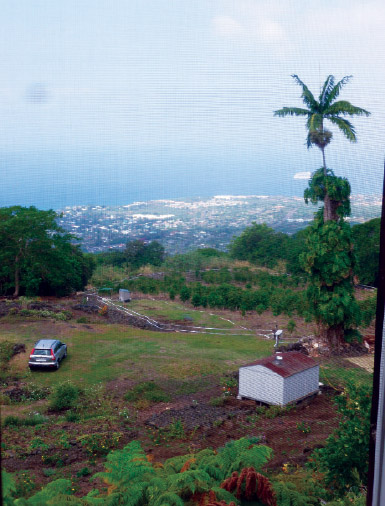
The Y. Kimura Store was renamed the Kimura Lauhala Shop in the 1950s. As accomplished weavers, Tsuruyo and her sister-in-law, Hatsu, took over the management of the store and added more lauhala products. Tsuruyo had the creative idea to line the baskets with material, and as coin purses, eyeglass cases, and other products were included, the cloth lining became a recognized feature of the lauhala merchandise. Some tried to copy and mass produce the lining, however none quite fit like the customized approach that Tsuruyo was known for.
Alfreida remembers how skillful her mother was with her hands, so detailed and precise in her work, “My mother loved lauhala, she loved it.”
At the time, there were as many as 30 local weavers contributing to the store, each with their own specialty. Lauhala was in demand after World War II as military personnel bought lauhala items as gifts. The Kimura expansion continued when Hatsu opened a lauhala store in Hilo, Hale Lauhala, and later opened another store in Waikīkī. Tsuruyo remained in Hōlualoa operating and managing the Kimura Lauhala Shop with the help of family and friends. Even during the prosperous times, there were moments Alfreida remembers when her uncles would leave Hōlualoa with groceries for sale and return with lauhala mats and furniture. No matter what people needed, the Kimura family provided a place for people to work, live, or trade for the betterment of all.
Alfreida and her sister, Ella, began to take over the store in the 1980’s. Alfreida, a retired Hawaiian Airlines employee, managed the business operations and Ella, a retired teacher, made the beautiful haku (woven) lei that adorned the lauhala pāpale (hats). Today, Alfreida can still be found in the store cheerfully fitting people for hats or bags, while Ella is in her element taking care of the gardens that surround the store and family home.
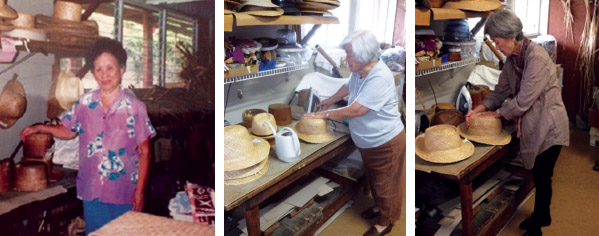
Renee Kimura, Alfreida’s only child and eldest of the fourth generation, remembers the experience of growing up with her great-grandparents, grandparents, and parents. “I remember Ji-yan and Baban [great-grandparents Yoshimatsu and Tomo] picking coffee early in the morning and stacking dried coffee wood on the furo for burning; they worked long hours and always took care of people.”
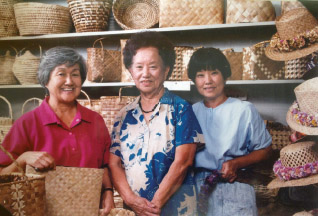
A flash of memories seem to wash over Renee as she pauses. “I grew up thinking I was poor; we had an outhouse and water tanks. When we had a school break, we picked coffee. Other children didn’t pick coffee, so I thought we were poor.”
In a hindsight moment, that only life can provide, Renee is filled with heartfelt gratitude for what her great-grandparents instilled in her, along with her cherished grandmother and parents. “My great-grandparents were rich within themselves. They provided education and travel for their children at a time when that was rare.”
Renee learned to weave at her grandmother Tsuruyo’s side, reminiscing about cutting patterns from newspapers and fiber. Her grandmother would take the pattern and in an instant, mark, sew, and pinch it. Right before Renee’s eyes, there would be a hat-shaped pattern. Apart from her mother, Renee attributes her weaving talent to kumus Aunty Gladys Grace, Josephine Fergerstrom, and Ed Kaneko.

After graduating from the University of Colorado with a degree in education and sociology and a minor in fine arts, Renee found herself moving further west with each work experience, from Denver to Los Angeles, until she returned home to Hawai‘i Island in 1987 as an educator at a local elementary school. In 2000, a century after her great-grandparents emigrated from Japan, Renee Kimura stepped in to assist her mother and aunt with the store, while also caretaking for her grandmother and father.
Today, Renee manages the operations and sales of the store, while Alfeida and Ella continue to beautify the landmark with their stories and gardens.
In 2014, the descendants of Ji-yan and Baban (Yoshimatsu and Tomo Kimura) celebrated the 100-year anniversary of the Kimura Lauhala Shop with a family reunion in Kona. In commemoration, Hawai‘i County’s Mayor, Billy Kenoi, honored the Kimuras with this excerpt from his Mayor’s Message on July 19, 2014:
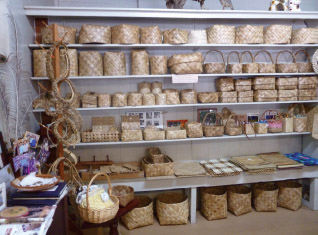
“Yoshimatsu and Tomo led accomplished lives filled with cherished memories and extraordinary achievements and they made significant contributions to improving the quality of life for the people of Kona.
“Yoshimatsu Kimura was a well-respected and highly successful farmer, rancher, builder, businessman, and community leader. On his 75th birthday in 1948, the Hawai‘i Times Newspaper presented the ‘Recognition of Community Service Award’ to Yoshimatsu for his many contributions to the Kona community. In 1914, he built Y. Kimura Store, a 3 story house and general merchandise store that sold household goods. After 100 years, the store still remains open for business in Kona as the Kimura Lauhala Shop.
“Tomo Kimura is most remembered by her friends for her compassion and generosity towards people in need of help. As co-owner of Y. Kimura Store, she occasionally burned account books of friends and neighbors who could not pay for charged items at the store. As an expert in the healing arts, she freely shared her skills with people from all over the Big Island. When Kona experienced severe droughts, Yoshimatsu and Tomo Kimura shared their drinking water with anyone who needed it since they owned one of the largest water tanks in Kona. They generously gave from their hearts without expecting anything in return.”

A metaphor for life, the weave of the lauhala intertwines the legacy of this Japanese family as an integral part of history on Hawai‘i Island. The Kimura’s, and other Japanese families of their time, were the pioneers in building sustainable businesses from the land, rich in family values and community bonds. Their generational history, woven in the hillside homestead, shares a story that will always be a part of who we are as a community today. ❖
Credit to:
Hubert S. Kimura, excerpts from Ji-yan and Baban (2014).
Billy Kenoi, Hawai‘i County Mayor, excerpts from “Mayor’s Message” (2014).
Contact Renee Kimura, Kimura Lauhala Shop: 808.324.0053. Monday-Friday 9am–5pm, Sat 9am–4pm
